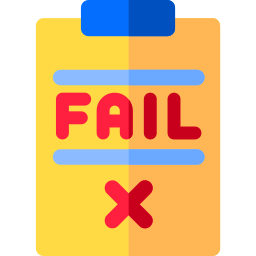
Following on from our discussion of ungrading, this month we’ll be discussing pass/fail rates in introductory programming courses. [1] Here is the abstract:
Vast numbers of publications in computing education begin with the premise that programming is hard to learn and hard to teach. Many papers note that failure rates in computing courses, and particularly in introductory programming courses, are higher than their institutions would like. Two distinct research projects in 2007 and 2014 concluded that average success rates in introductory programming courses world-wide were in the region of 67%, and a recent replication of the first project found an average pass rate of about 72%. The authors of those studies concluded that there was little evidence that failure rates in introductory programming were concerningly high.
However, there is no absolute scale by which pass or failure rates are measured, so whether a failure rate is concerningly high will depend on what that rate is compared against. As computing is typically considered to be a STEM subject, this paper considers how pass rates for introductory programming courses compare with those for other introductory STEM courses. A comparison of this sort could prove useful in demonstrating whether the pass rates are comparatively low, and if so, how widespread such findings are.
This paper is the report of an ITiCSE working group that gathered information on pass rates from several institutions to determine whether prior results can be confirmed, and conducted a detailed comparison of pass rates in introductory programming courses with pass rates in introductory courses in other STEM disciplines.
The group found that pass rates in introductory programming courses appear to average about 75%; that there is some evidence that they sit at the low end of the range of pass rates in introductory STEM courses; and that pass rates both in introductory programming and in other introductory STEM courses appear to have remained fairly stable over the past five years. All of these findings must be regarded with some caution, for reasons that are explained in the paper. Despite the lack of evidence that pass rates are substantially lower than in other STEM courses, there is still scope to improve the pass rates of introductory programming courses, and future research should continue to investigate ways of improving student learning in introductory programming courses.
Anyone is welcome to join us. As usual, we’ll be meeting on zoom, see sigcse.cs.manchester.ac.uk/join-us for details.
Thanks to Brett Becker and Joseph Allen for this months #paper-suggestions via our slack channel at uk-acm-sigsce.slack.com.
References
- Simon, Andrew Luxton-Reilly, Vangel V. Ajanovski, Eric Fouh, Christabel Gonsalvez, Juho Leinonen, Jack Parkinson, Matthew Poole, Neena Thota (2019) Pass Rates in Introductory Programming and in other STEM Disciplines in ITiCSE-WGR ’19: Proceedings of the Working Group Reports on Innovation and Technology in Computer Science Education, Pages 53–71 DOI: 10.1145/3344429.3372502

